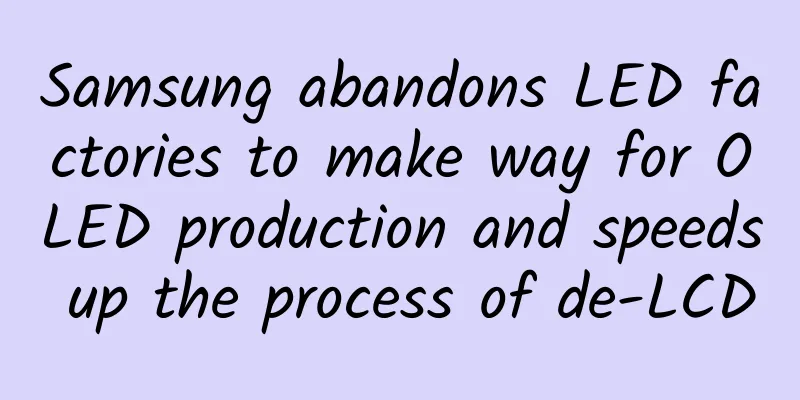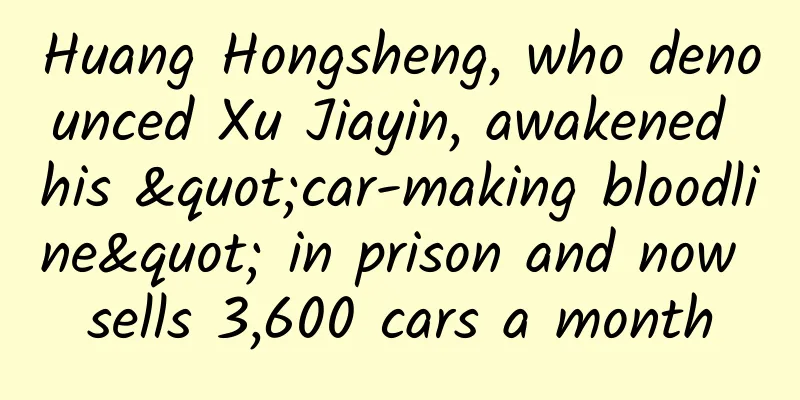Samsung abandons LED factories to make way for OLED production and speeds up the process of de-LCD

|
While domestic TV manufacturers are still discussing software and content, some profound changes are taking place in the upstream of televisions. The recent changes in the LCD and OLED production lines of Korean manufacturers are quite intriguing and may even affect the future development trend of the entire display industry. Samsung sells domestic LED factory for $7 billion to increase OLED investment According to the Korea Herald, Samsung is in talks with private equity firms in Hong Kong to sell its LED business unit in mainland China (Tianjin Samsung LED Co., Ltd.), including the LED packaging factory and facility site. Furthermore, they have been drastically reducing their LCD panel production capacity since 2015. Samsung ended the production of its fifth-generation line P5, and LG Display shut down its sixth-generation line P6E. Samsung and LG will also stop producing some of their fifth-generation lines L6 and P6. Globally, according to data provided by WitsView, the production capacity of large-size LCD panels in 2017 was about 216 million square meters, with an annual growth rate of only 3.9%, the most conservative since 2014. And the increase in production capacity mainly came from domestic LCD panel production lines such as Innolux's Luzhu 8.6-generation line, BOE's Fuzhou 8.5-generation line, and HKC's Chongqing 8.6-generation line. Upstream TV panel manufacturers, led by Samsung and LG, seem to be accelerating the process of de-liquidizing. In contrast, Korean manufacturers have significantly increased their investment in OLED production. Samsung's A4 flexible OLED factory, in which it has just invested US$7 billion, has confirmed the start of construction and will provide Samsung with a monthly production capacity of 60,000 OLED substrates starting in 2019; LGD has even invested US$8.9 billion to build the world's largest OLED production base P10. Behind this is the rise of domestic manufacturers. Domestic manufacturers have already made a comeback in the LED business and can produce better LCD panel products at a lower price. In a highly competitive market environment, the profitability of LCD panels from Samsung, LGD and other manufacturers is continuing to deteriorate, becoming a stumbling block to the company's performance development. In order to maintain profit margins, international brands have apparently decided not to compete with Chinese manufacturers on low-premium products, but instead to increase investment in the OLED field and overtake others. This will not only bring them closer to the future of display technology, but also enable them to compete with cost-effective domestic products, killing two birds with one stone. iPhone 8 becomes a catalyst, OLED technology matures and giants return On the other hand, the news that iPhone 8 will fully adopt OLED screen is undoubtedly good news for the OLED field. As we all know, Apple has never won by cutting-edge technology or black technology, but is good at using mature technology to maximize the charm of products and elevate user experience to a high level. Apple has reached an order contract with Samsung for hundreds of millions of OLED screens for iPhone 8, which means that Apple believes that the display field has completed the transition from LCD to OLED. With Apple's participation, this year, the market share of OLED screens in the mobile phone field has surpassed LCD for the first time, which is of great significance to OLED technology. At the same time, Sony, which announced its withdrawal from the large-screen OLED market together with Samsung in 2014, has also returned to the market. The BRAVIA OLED A1 it launched has received huge market response and occupied 30% of the OLED TV market in just three weeks. Samsung and Sony withdrew from the market because the defects of OLED were very obvious at that time. The yield rate was not high, the cost was not low, and the lifespan was not long enough, which made it unsuitable for mass production in the consumer field. Now, with the development of technology, the problems of OLED have been solved to a large extent. At the same time, compared with the quantum dot, ULED, laser projection and other technologies that have emerged in the industry, OLED still has unique advantages in contrast, color gamut, response speed, foldability and thickness. In the past 2016, Samsung topped the LCD TV sales list for the eleventh consecutive year with sales of 48 million units. Facing the rise of Chinese brands of LCD panels, Samsung finally decided to change lanes and overtake, focusing on OLED panel technology to avoid direct competition. From another perspective, Samsung and LG seem to be unwilling to compete with domestic panel manufacturers such as BOE and CSOT for the LCD panel market. However, facing the technological upgrades of Samsung and LG, it remains a question how domestic manufacturers can seize the initiative in the future display market. As a winner of Toutiao's Qingyun Plan and Baijiahao's Bai+ Plan, the 2019 Baidu Digital Author of the Year, the Baijiahao's Most Popular Author in the Technology Field, the 2019 Sogou Technology and Culture Author, and the 2021 Baijiahao Quarterly Influential Creator, he has won many awards, including the 2013 Sohu Best Industry Media Person, the 2015 China New Media Entrepreneurship Competition Beijing Third Place, the 2015 Guangmang Experience Award, the 2015 China New Media Entrepreneurship Competition Finals Third Place, and the 2018 Baidu Dynamic Annual Powerful Celebrity. |
<<: The turbulent power battery market: How can we stand out?
>>: Most will be eliminated, and the path of new forces in car manufacturing is becoming clearer
Recommend
How to improve landing page conversion rate?
Introduction: In our daily promotion process, we ...
Are you afraid of getting fat when dining out? You may be blaming carbohydrates
What is the source of happiness? It must be carbo...
In order to let aliens understand the earth's information, they desperately came up with these "garbled codes"
Recently, the U.S. Congress held a public hearing...
Who will get a share of the 100 billion yuan terminal subsidies in 2016?
Source: NetEase Technology Original title: "...
What is it like to update an old iPhone to iOS 10? We did an experiment
Tencent Technology News: In recent years, Apple s...
Xiaohongshu blogger’s guide to making money on Double Eleven!
The National Day holiday is over, and Double 11 i...
BYD launches new pure electric car e3, which may be launched in 2017
Recently, media reported that BYD's new energ...
Do you have unbearable stomach pain? Be careful! It may be...
I haven't had a bowel movement or passed gas ...
Two thoughts on Bilibili products
Is it necessary for Bilibili to have a forum/disc...
PPTV A three-year medical history of an "anemia" patient
There is a company that suffers from anemia. They...
Is the purer the water, the better? The “pure water is harmless” theory also depends on the situation →
Yesterday I talked about the difference between w...
Golden rules for creating hit products for new consumer brands
For a long time, many people have had certain mis...
WeChat Mini Program e-commerce qualifications, what qualifications are needed to do e-commerce with a mini program?
According to statistics, the transaction amount of...
Interesting story | Does land have more survival advantages than the ocean?
Recently, I saw some netizens discussing "Wh...
Gifted Mission-How to Live a Powerful and Free Life
Gifted Mission-How to Live a Powerful and Free Li...









